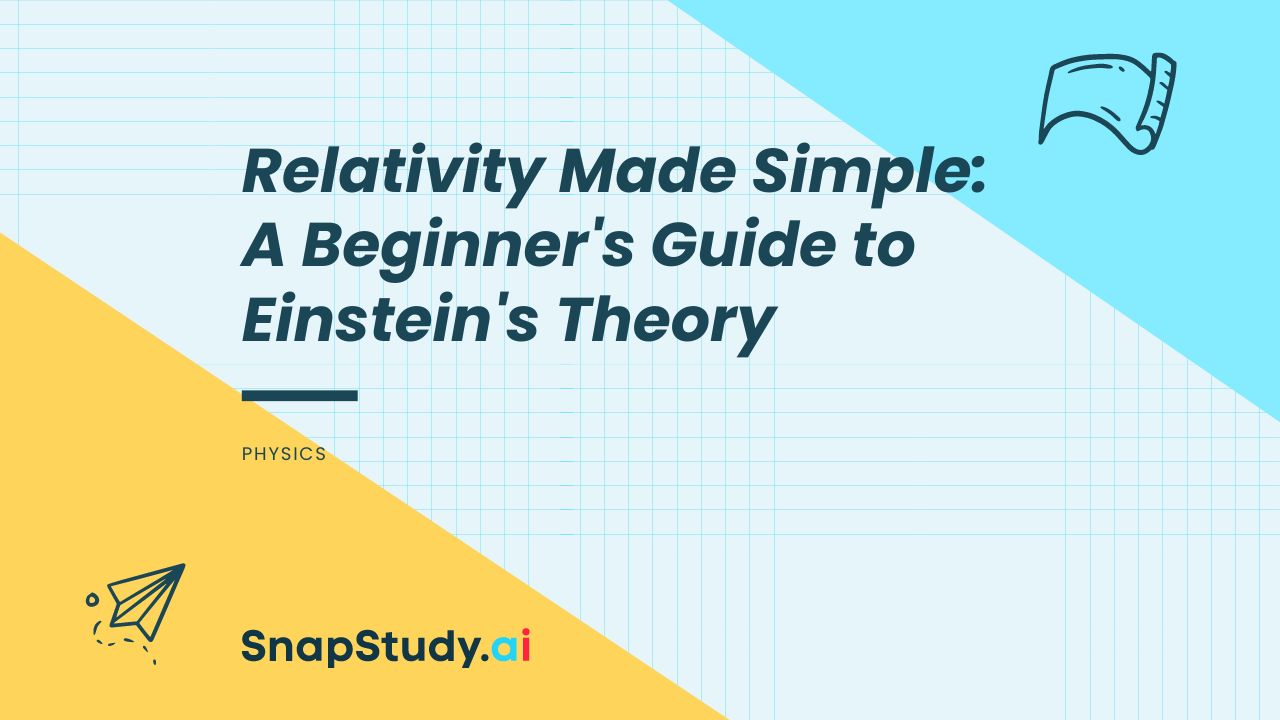Introduction
Albert Einstein’s theory of relativity, first introduced in the early 20th century, is a cornerstone of modern physics. It has reshaped and revolutionized our understanding of fundamental concepts such as space, time, and gravity. The theory, while complex, offers profound insights into the workings of our universe. This article aims to simplify this intricate theory for beginners, making it more accessible and easier to understand.
What is Relativity?
Relativity is a groundbreaking theory in physics that fundamentally altered our comprehension of how the universe operates. The theory describes how the laws of physics apply to objects that are moving relative to one another. It’s important to note that the theory of relativity comprises two parts: special relativity and general relativity, each with its own unique implications and interpretations.
Special Relativity
Special relativity, first published by Albert Einstein in 1905, upends our intuitive understanding of space and time. The theory postulates that the laws of physics are the same for all non-accelerating observers. This means that no matter how fast you’re moving, you’ll always measure the speed of light in a vacuum to be the same. This holds true regardless of the motion of the light source or the observer.
General Relativity
General relativity, which Einstein introduced in 1915, is an extension of special relativity that includes gravity. It’s a theory of gravitation that describes gravity not as a force, but as a curvature of spacetime caused by mass and energy. This revolutionary concept includes mind-bending phenomena such as black holes and is used to describe the universe on a large scale.
Key Concepts of Relativity
The theory of relativity is built on several key concepts. Understanding these fundamental ideas is crucial to grasping the essential elements of the theory.
Space-Time
Space-time is one of the most important concepts in relativity. It’s a four-dimensional framework that combines the three dimensions of space (length, width, and height) with the one dimension of time into a single four-dimensional continuum. According to relativity, we exist within this spacetime continuum, and our perception of space and time can change depending on our relative speed and position.
Time Dilation
Another fascinating consequence of relativity is time dilation. Time dilation refers to the difference in the elapsed time as measured by two observers due to a velocity difference relative to each other, or due to a difference in gravitational potential. According to relativity, time can slow down or speed up depending on the speed of the observer or their proximity to a massive object.
Length Contraction
Length contraction is a similarly counterintuitive phenomenon. It’s the idea that a moving object’s length, as observed from a stationary frame of reference, is measured to be shorter than its proper length. The proper length is the length as measured in the object’s own rest frame.
E=mc^2
Perhaps the most famous equation from the theory of relativity is E=mc^2. This iconic equation states that energy (E) is equal to mass (m) times the speed of light (c) squared. It implies that mass and energy are interchangeable and that a small amount of mass can be converted into a large amount of energy, and vice versa.
Conclusion
Albert Einstein’s theory of relativity is a complex but fundamental pillar in our understanding of the universe. While it may seem daunting and counterintuitive at first glance, with some time, patience, and effort, it can turn into a fascinating topic to explore. By breaking down the theory into its key concepts and principles, we can begin to grasp the incredible universe that Einstein’s theory reveals to us.





